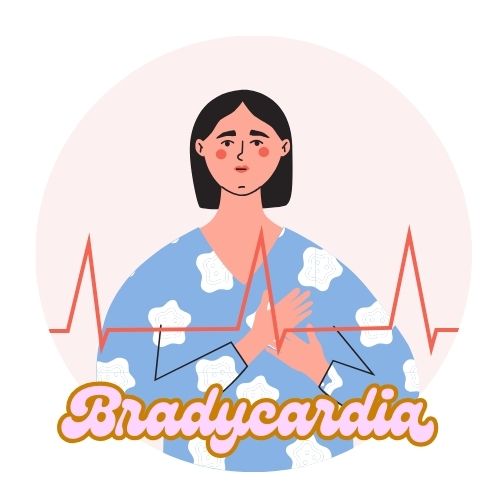Bradycardia is a medical condition characterized by a slower than normal heart rate, typically defined as fewer than 60 beats per minute (bpm) in adults. While bradycardia can be benign, it can also indicate underlying health issues that require medical attention. This article provides a comprehensive overview of bradycardia, including its causes, symptoms, diagnosis, and treatment options.
What is Bradycardia?
The heart’s electrical system controls the timing and rhythm of heartbeats. Bradycardia occurs when this system malfunctions, leading to a reduced heart rate. While a normal resting heart rate for adults typically ranges from 60 to 100 bpm, bradycardia can occur at rest or during physical activity, affecting the heart’s ability to pump blood efficiently.
Types of Bradycardia
Bradycardia can be classified into several types based on its underlying causes:
- Sick Sinus Syndrome: A condition where the heart’s natural pacemaker (the sinoatrial node) fails to function properly, leading to irregular heartbeats and bradycardia.
- Heart Block: A delay or blockage in the electrical signals traveling from the atria to the ventricles. This can be further categorized into:
- First-Degree Heart Block: A mild delay that often requires no treatment.
- Second-Degree Heart Block: A more significant delay where some electrical signals are blocked.
- Third-Degree Heart Block (Complete Heart Block): A severe condition where no electrical signals reach the ventricles, often requiring immediate intervention.
Causes of Bradycardia
Bradycardia can result from various factors, including:
- Heart Conditions:
- Coronary artery disease
- Heart valve disorders
- Heart failure
- Previous heart attacks
- Aging:
- Natural aging can affect the heart’s electrical system, leading to a higher incidence of bradycardia in older adults.
- Electrolyte Imbalances:
- Abnormal levels of potassium, calcium, or magnesium can disrupt the heart’s electrical impulses.
- Medications:
- Certain medications, including beta-blockers, calcium channel blockers, and some antiarrhythmic drugs, can slow the heart rate.
- Sick Sinus Syndrome:
- A malfunctioning sinoatrial node can lead to bradycardia and may be seen in individuals with other heart conditions.
- Hypothyroidism:
- An underactive thyroid can slow down the body’s metabolic processes, including heart rate.
- Obstructive Sleep Apnea:
- This condition can lead to intermittent drops in heart rate during sleep.
- Infections:
- Inflammatory conditions such as myocarditis can affect the heart’s electrical system.
Symptoms of Bradycardia
Many individuals with bradycardia may not experience noticeable symptoms, especially if the condition is mild. However, when symptoms do occur, they may include:
- Fatigue: Unusual tiredness or weakness.
- Dizziness or Lightheadedness: A feeling of faintness, especially upon standing.
- Shortness of Breath: Difficulty breathing, particularly during physical exertion.
- Chest Pain: Discomfort or tightness in the chest.
- Fainting (Syncope): A sudden loss of consciousness due to insufficient blood flow to the brain.
- Confusion: Especially in older adults, bradycardia can lead to cognitive disturbances.
Diagnosis of Bradycardia
Diagnosing bradycardia involves a combination of medical history, physical examination, and diagnostic tests:
- Medical History and Physical Exam:
- A healthcare provider will assess symptoms, review medical history, and conduct a physical examination.
- Electrocardiogram (ECG or EKG):
- This test records the heart’s electrical activity, helping to identify bradycardia and any underlying issues, such as heart block.
- Holter Monitor:
- A portable device worn for 24-48 hours to monitor heart activity over time, particularly useful for capturing intermittent episodes of bradycardia.
- Event Monitor:
- Similar to a Holter monitor but used for longer durations to document heart rhythms when symptoms occur.
- Echocardiogram:
- An ultrasound of the heart that provides images of heart structure and function, helping to identify potential causes of bradycardia.
- Electrophysiological Study (EPS):
- An invasive test that assesses the heart’s electrical system and can help determine the cause of bradycardia.
Treatment Options for Bradycardia
The treatment for bradycardia depends on the severity of symptoms, the underlying cause, and the individual’s overall health. Options include:
- Observation:
- If bradycardia is asymptomatic and not linked to serious underlying conditions, monitoring may be all that is required.
- Medication Adjustment:
- If bradycardia is caused by medications, adjusting the dosage or switching medications may alleviate symptoms.
- Treating Underlying Conditions:
- Managing conditions such as hypothyroidism or electrolyte imbalances can help normalize heart rate.
- Pacemaker Implantation:
- In cases of symptomatic bradycardia or severe heart block, a pacemaker may be implanted. This device sends electrical impulses to the heart to maintain a normal heart rate.
- Lifestyle Changes:
- Incorporating heart-healthy habits, such as a balanced diet, regular exercise, and avoiding stimulants like caffeine and nicotine, may help improve heart health.
- Regular Follow-Up:
- Ongoing monitoring and regular check-ups with a healthcare provider are essential for managing bradycardia effectively.

Bradycardia is a condition that can range from benign to potentially life-threatening, depending on its underlying causes and symptoms. Early diagnosis and appropriate management are crucial for ensuring optimal heart health and preventing complications. If you experience symptoms suggestive of bradycardia, it is essential to consult a healthcare provider for evaluation and tailored treatment options. With the right approach, individuals with bradycardia can lead healthy and active lives.







